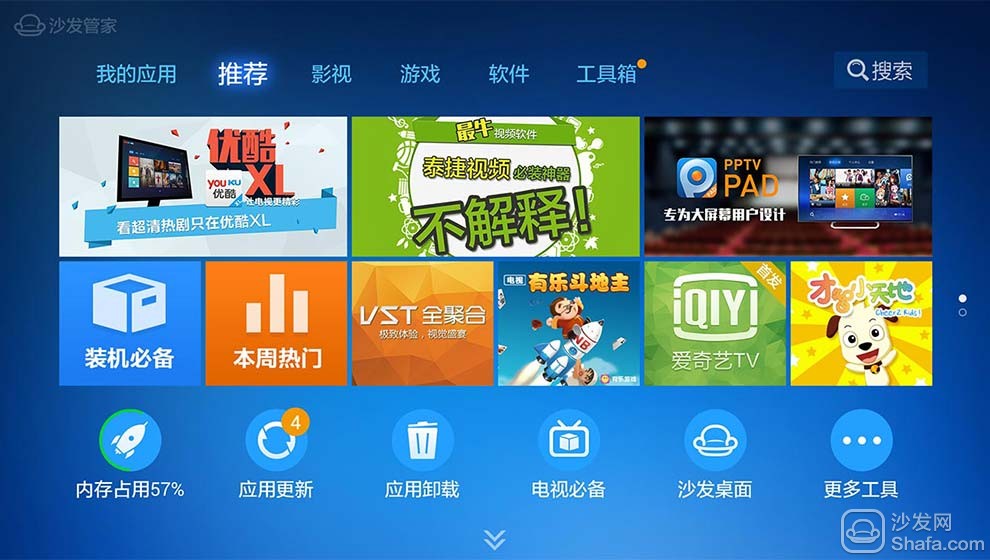On December 26th, TVOS scale application demonstration in Shaanxi TV Radio Network was launched in Xi’an, Shaanxi Province. Director Wang Xiaojie of the Department of Science and Technology of the State Administration of Press, Publication, Radio, Film and Television, Deputy Director of the Science and Technology Committee of the General Administration of Du Baichuan, and Director of the Academy of Sciences, Zou Feng , Prof. Jiang Wenbo, Director of the Planning Institute, Sheng Zhifan, Chief Engineer of the Guangzhou Academy of Sciences, Zeng Qingjun, Deputy General Manager of China Radio and Television Network, and technical experts from cable television network companies in Shanghai, Guangdong, Hunan, Hubei, Zhejiang, and Liaoning The users of the Fuli City Community in Chang’an District of Xi’an City visited and experienced the application of TVOS.
It is understood that the first TVOS commercial set-top box is from Xi'an Hai Digital Multimedia Technology Co., Ltd., and the TVOS 1.0 DB-5923C intelligent set-top box launched by Hai-Dong has officially entered commercial use in Xi’an, Shaanxi Province on December 10, 2014.
Haiyue TVOS box has changed the style of the traditional radio and television box, the surface of the piano paint technology, cool white base matching cool black cover,mm size, so that the entire box is small and stylish. The interface of the box is also rich. In addition to the interfaces of the traditional set-top box, two USB ports, a memory card interface, HDMI, audio fiber interfaces, and network interfaces have been added, providing strong hardware support for the user's experience. On the chip, the box is equipped with the Hass V200 main chip, and the 1G+4G storage configuration also provides a good platform for the software experience, as shown in Figure 1.

Figure 1 Xi'an Hai TVOS box
The mature hardware design plan and good human-computer interaction interface of the TV version of the TV Edition box represents a new milestone in the integration of broadcasting and Internet. This TVOS box introduces the current cool UI interface (see Figure 2, 3, 4, 5, 6 and 7 below). The biggest highlight of this software is to make the live broadcast the same as other applications. Good human-computer interaction provides extremely important support.

Figure 2 TV UI version of the TV version of the UI main interface
Seeing the main page of the TV version of the TV version, people can't help but feel that the interface of the original box of radio and television can also be very beautiful. The simple and stylish UI has a feeling of bringing the audience to the times. There is no more old-fashioned and serious feeling.
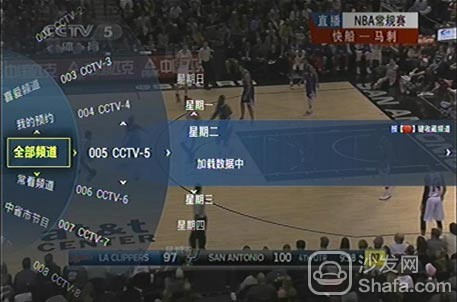
Figure 3 Haishu TVOS version of the box live interface
Into the live page, switch operations, suddenly bright, transparent arc-style switch window, full of action, really feel that this version of the software developers really is from the perspective of the user to design this product.
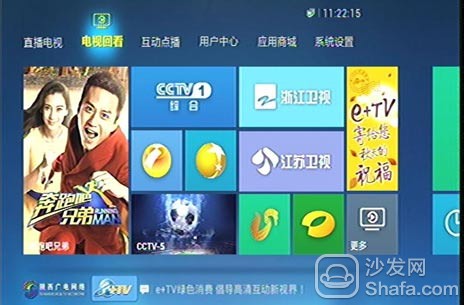
Figure 4 TV version of TVOS version of the box back to see the interface

Figure 5 TV version of the TV version of the box UI interactive on-demand interface
Respectively experience the traditional radio and television modules such as watching and interactive on-demand broadcasting. They also feel the changes in radio and television and the changes in the industry.
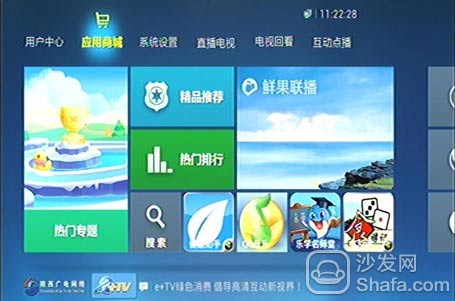
Figure 6 TV version of the TV version of the box UI application mall interface
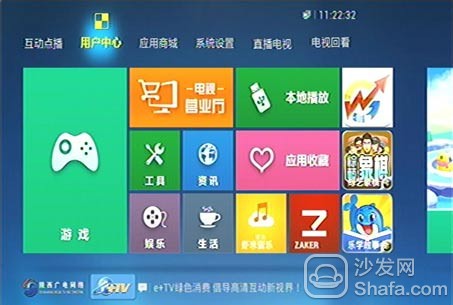
Figure 7 TV version of the TV version of the box UI user center interface
Finally, it is worth mentioning that the application store and user center in this version of the software fully support users to self-install and uninstall a variety of application APPs and upgrade the interactive experience again.
Whether it is a matter of heartbeat or not, Shaanxi friends can contact local radio and television to purchase, install and experience this smart box. Other provinces need to wait patiently for release.

Figure 8: Report of Shaanxi TV Radio Network TV Smart TV Operating System Scale Application Launch Conference
In the "Shaanxi Broadcasting and TV Network Intelligent TV Operating System (TVOS) Scale Application Demonstration Launch Conference", at the scene of the report, this box is well-known.
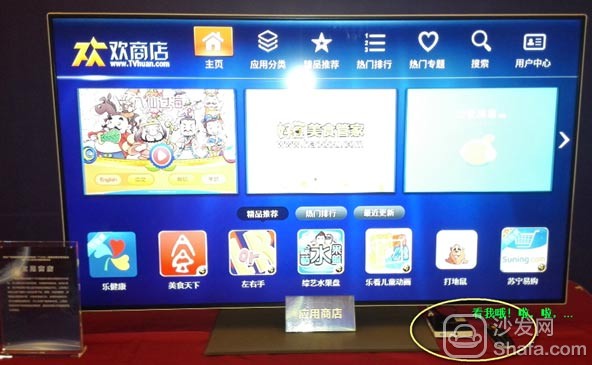
Figure 9 TVS TVOS box at the scene

Figure 10 Haishu TVOS box "Look at me more than you like!"

Fig. 11 Haishu TVOS box "Yes, I'm cool!"

Figure 12 Haishu TVOS box "Don't look like it, people will be shy!"
So, what is the outlook for the TVOS system? Why can he be welcomed by the broadcasting and TV industry? Through TVOS market prospect analysis and technical scheme introduction, believe professional you can find a satisfactory answer.
Under the global trend of intellectualization, China’s radio and television companies are able to carry intelligent services such as multi-screen interaction and multi-screen integration to meet the “4A†requirement. The Science and Technology Division of the State Administration of Press, Publication, Radio, Film and Television organizes research institutes, equipment developers, network operators, etc. 17 units established the TVOS cooperation and development team in March 2012, and officially released the 1.0 version at the end of 2013, but now they are in full swing in the development of version 2.0.
At present, the smart operating systems that test water in the smart TV field are IOS, Android, MeeGo, Tizen, etc. The most competitive one is the Android operating system dominated by the US Google Corporation. In the field of smart TVs, there have been a number of smart TVs based on Android's deep customization, such as millet TV, LeTV, and so on. If smart TVs are occupied by foreign non-controllable and controllable operating systems, they will seriously threaten the country’s cultural and information security.
The TVOS came into being under the background of this era. He naturally has the advantages of security, controllability, and independent intellectual property rights. The independent intellectual property rights are very important. Many people in the industry will compare TVOS with Android and think that Android is a free open operating system. In fact, Android is not truly “freeâ€. Microsoft started with individual terminal manufacturers in 2010. The launch of the Android phone LICENSE charges, only in 2013, Microsoft received LICENSE fees from mobile phone terminal manufacturers reached 1.6 billion. We know that TVOS is geared to TV screens and is related to our hundreds of millions of families. Without China's own intellectual property rights, the entire industry chain will be seriously threatened in the future competition. SARFT will look far ahead and integrate the industrial chain to build TVOS. From a higher level to avoid the future of the broadcasting industry.
TVOS has the following features in terms of technology.
(1) Naturally built "digital genes" supporting digital TV services
TVOS will support the "genes" of digital TVs in the smart operating system kernel, which is well integrated with the smart operating system and becomes an indispensable component of the smart operating system. The digital TV function solution of TVOS is shown in Figure 15.

Figure 13 Schematic diagram of TVOS digital TV function solution
(2) Support DCAS for leveling content protection
The receiving terminal can download through the DCAS client software to implement flexible switching between different DCAS system terminals so as to achieve horizontal service protection level. TVOS takes into account DCAS support from the initial architectural design, implements CA components, and supports DCAS and traditional CA.
(3) Architecture of Java Ecology and Web Ecology
Java applications focus on logical operations, web applications focus on information presentation, and TVOS provides an execution environment that supports both applications. Different from Android, TVOS provides a Java ecological and Web ecological architecture. The existence of the Web execution environment does not depend on the Java environment. The solution of the TVOS execution environment for TVOS is shown in Figure 16.

Figure 14 Solution of TVOS's Web Execution Environment Solution
(4) TVM environment supports J2ME applications
TVOS has absorbed the advantages of Dalvik virtual machines, and in order to protect operators' early investment, Dalvik virtual machines can execute Java applications based on J2ME specifications. TVOS implements TVM (Television Virtual Machine), transforms Dalvik's core Java library, complements the J2MEPBP/FP/CDC library, and provides conversion tools for converting J2ME.class files to Dalvik.dex files and J2ME.jar packages. Convert to .apk package; J2ME application .jar package can be statically converted into .apk package on the front end side, and can also be dynamically converted into .apk package on the terminal side. Finally, the dalvik virtual machine executes .dex files.
(5) Java application framework "gasket" mechanism TVOS uses a "gasket" mechanism to achieve compatibility with Android applications, compatible with a large number of existing Android applications. If you need to be compatible with other platforms in the future, you can also use the "shimming" mechanism to achieve compatibility. The principle of the shim mechanism is shown in Figure 17.
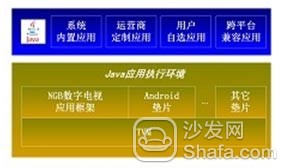
Figure 15 TVOS "gasket" mechanism
(6) Java service code is refactored in C++ to improve operating efficiency In the large-screen application scenario of smart TVs, the execution efficiency of applications has a great influence on the user experience. Therefore, the newly added functional components of TVOS are directly implemented in C/C++ language, and the functional components imported from Android are adopted. C/C++ language refactoring. The use of native C/C++ to implement background service components greatly improves the operating efficiency of TVOS.
In summary, TVOS is a built-in operating system of digital TV “genesâ€. Digital TV-related functional components can be tightly coupled with other functional components of the system and work collaboratively and efficiently. The “shimming†mechanism is proposed to achieve compatibility with other platform applications. , Has a certain openness in the software architecture; proposed a Java application execution environment such as TVM, and the application framework fully implements GY/T267-2012 "Negative Next Generation Broadcast and Television Network (NGB) Terminal Middleware Technical Specification", supporting the early adoption of J2ME. Digital TV applications compliant with NGB middleware standards have protected operators' existing business deployments and investments; functional components are all implemented using C/C++ and operating efficiency is more efficient than Java.
Recommended installation sofa butler, download address: http://app.shafa.com/
